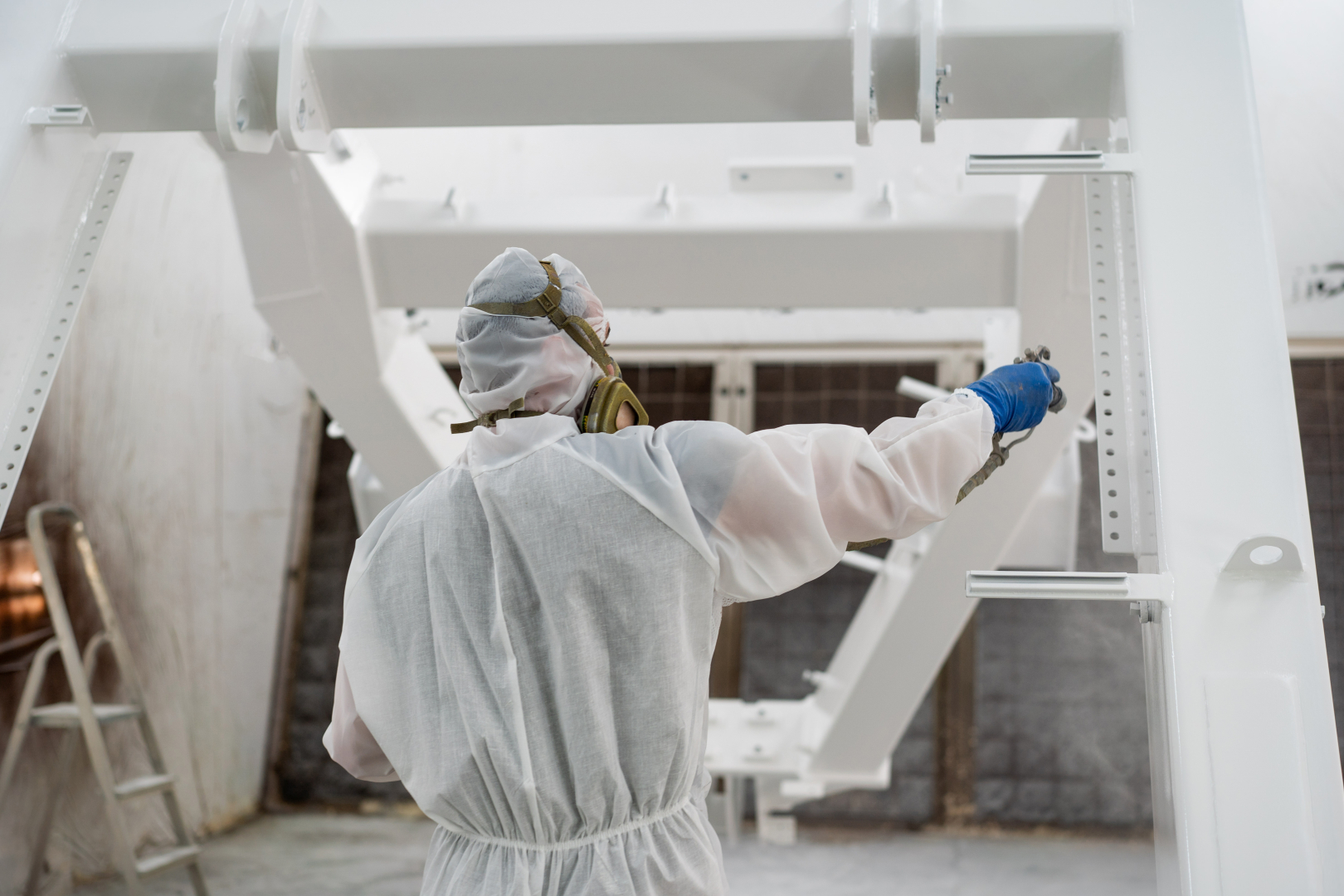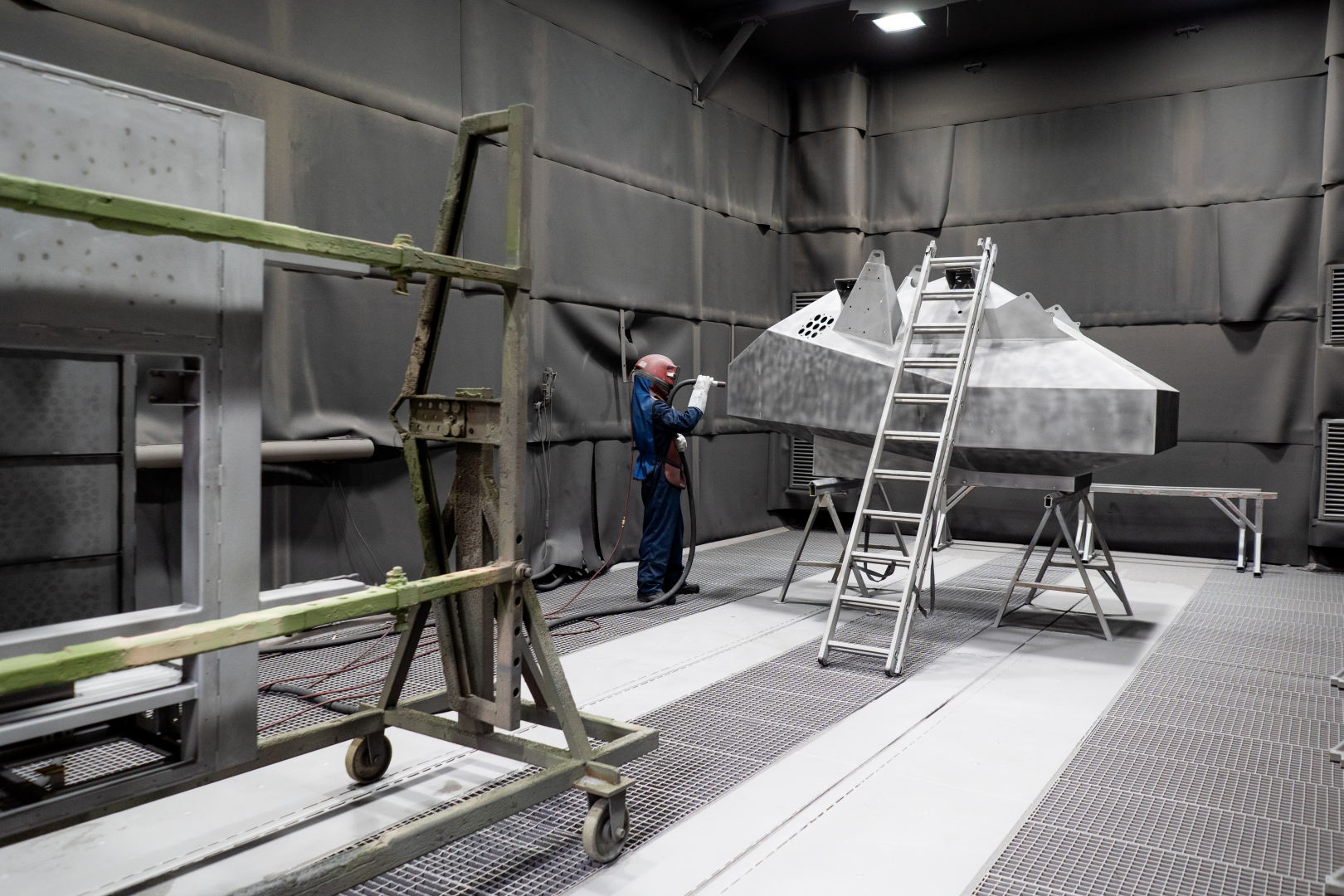
"New" unit of measure and problems with painting
The described situation happened to me at the very beginning of my adventure with painting. One of our customers reported that there was something wrong with the paint we supplied - it began to streaks on the painted surfaces. From our side, no changes were made to the product in question, so the first of the questions we asked the customer was: what is the viscosity of the spray mixture? However, the painter did not have a DIN4 cup so he had no way to check this. We then asked and the amount of thinner added? And here the surprise, the customer answers that as much as always that is no three GLUGS (???). A flurry of thoughts began in my head... what glugs again!
Actually, I was just learning liquid paints, so I thought that maybe I just don't know such a unit of measurement. So as not to appear ignorant, I suggested a visit. Being already at the customer's place, I asked him to show how he dilutes - well, and everything became clear. The painter took a can of thinner, tilted it three times and explained: we have three glugs - gul, gul, gul.... :)
Inaccurate dilution, the change in ambient temperature (within a few days it rose by about 20 °C) and thus the change in the temperature of the supplied paint affected its viscosity. The conclusion is one - the viscosity of the mixture should be carefully controlled before application. Together with the customer, we reduced the amount of thinner and happily everything returned to normal. However, I already remembered the GULG unit for the rest of my life. :)
The ratio strip measuring stick? doesn't always work.
The demonstration at the customer's went really great. Quality accepted, work rate faster than before, price attractive... We start cooperation. We sent the first batch of product. Unfortunately, just two days later, we received a phone call with complaints from the customer what a g... we sold them. The product allegedly differed from the one at the show, as the paint did not dry as it should.
So We checked the documentation at our mixing plant, inspected the paint preparation process and the list of products sent to the customer. Everything matched. We then went to the customer and checked the coating - it was indeed not curing properly. We looked at the goods that went to the customer (paint, hardener, thinner) - no mistakes.
All that remained was an interview with the painters. It turned out that the correct proportions were used (such as in the technical sheet - 3:1), but when asked how to measure the proportions, we heard the answer: we do per the ratio measuring stick. We asked for a demonstration of the mix preparation process. One look and we immediately knew what it was all about. The strip ratio measuring stick itself was used fairly correctly, but the problem was the containers in which the paint was prepared. These were conical containers... It is known that if we use a ratio measuring stick strip and containers that are not straight, the proportions will be disturbed and we will get incorrect values... Another problem quickly solved :)
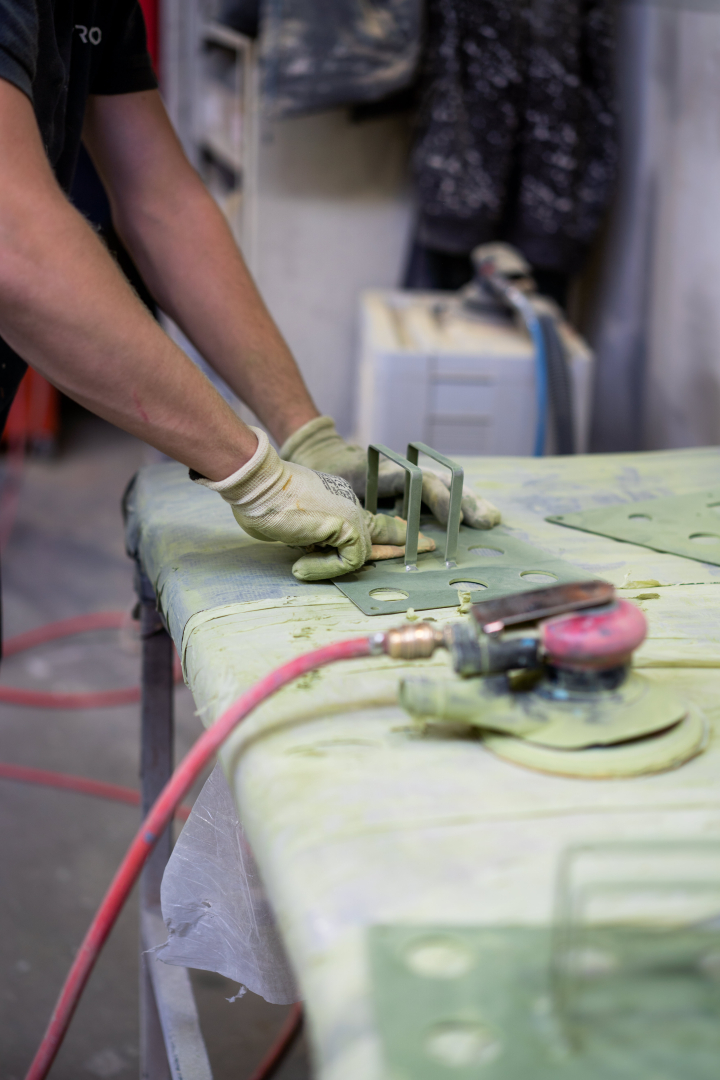
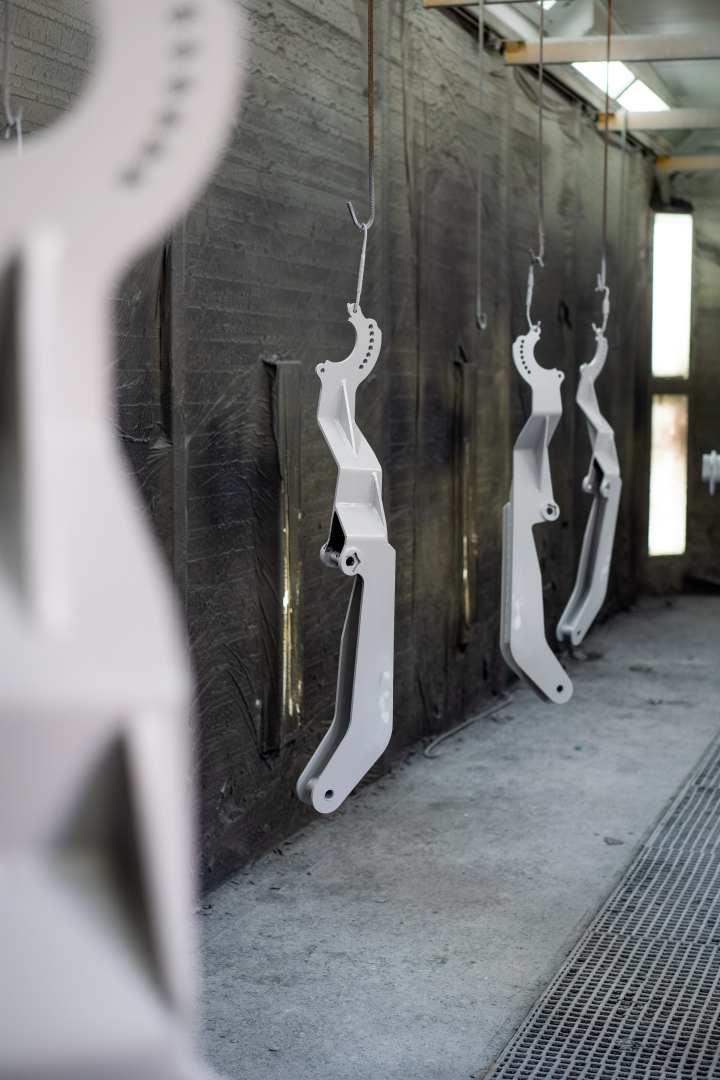
Older painting varnishing techniques - is this really the right way to work...?
We have established cooperation with a new customer, the first batch of products has been delivered. Not 24 hours after delivery, and we had already received a phone call with a complaint. It turned out that the paint was making terrible streaks. It is worth noting that the paint manuals cite "application errors" as the primary cause of such a defect. We started with a list of questions for the customer: mixing ratio - correct, conical cup (the story cited earlier) - no, mixing in the buckets in which the paint was delivered, measuring viscosity - yes, it's within the range given by our technician, nozzle and application pressure - correct.
We had quite a conundrum. We asked for photos. In the photos, terrible streaks, but at a glance it is clear that a great deal of paint was applied, rather too much. So We asked another question about the number of layers applied. Two full - as you presented. We were in a quandary. We went to the customers premises and checked the surface and measured the thickness - more than twice the recommended thickness. The painter insisted that he was only applying on two coats. We asked for a demonstration.
The painter took the gun in his hand, applied the paint first traditionally, horizontally from left to right and right to left, but instead of finishing the application of this first layer, he immediately began to vertically - from top to bottom and vice versa. He finished his work, turned to us and said: “well, that's the first layer applied, in a moment I'll put on the second layer”... It was the so-called cross-painting, which is practically not used at the moment. The varnisher did not know this, but in fact he had already applied 2 layers.
So instead of the recommended two normal coats, the customer ended up applying as many as four full coats. Not surprisingly, full gloss coating caused streaking in this situation. The lesson here is to check exactly how our customers paint. It's also a good idea for them to attend training courses from time to time to keep up to date with current painting techniques.

Why the fisheyes (craters) on the paint?
The customer had a fairly modern paint shop - brand-new booth, clean working conditions, etc. He reported to us with the problem of fisheyes (craters) constantly appearing on the painted surfaces even when he uses anti-silicone additives. I asked him to check the compressed air system (sometimes oil collects there, e.g. when we do not use proper air filters or those that are not maintained at all). However, the installation had already been checked twice and everything was fine.
We, for our part, checked the paint materials - everything was also correct. So where did the problem come from? It was not easy to find the cause, but in the end, it turned out that the director of the plant, took very strong care of his car - namely, he used dashboard and leather cleaning lotions quite often. He was also in the habit (which I liked a lot) of going over to every department in the company every morning, including the paint shop and directly to the paint booth. In this way, completely unknowingly, he was bringing in contamination from his car in the paint shop and paint booth.
So, if you work in the paint shop then keep these types of care products for your vehicles and even your skin to a minimum. As it turns out, this too can affect paint quality in the process.
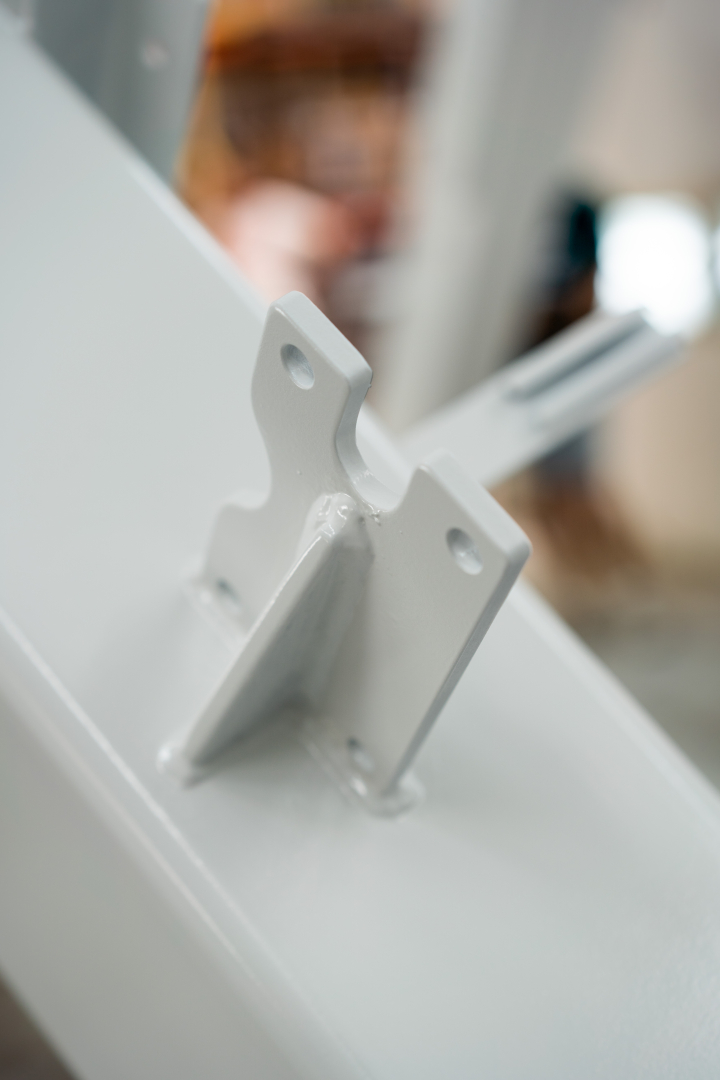

 You will read in 3 minutes
You will read in 3 minutes
Discover how Simplex is presenting the future of paint technology at PaintExpo 2024 in Karlsruhe. See our advanced pigments and color systems that are defining industry standards.
 You will read in 7 minutes
You will read in 7 minutes
Simplex is redefining the paint industry by combining series production with trade show paint quality. Through innovative technologies and processes, the company enables customers to achieve optimum product efficiency and aesthetics...
 You will read in 5 minutes
You will read in 5 minutes
We present a few words about how to choose a paint system and how to calculate the cost of painting, and explain whether using cheaper products always turns out to be beneficial for our budget.




